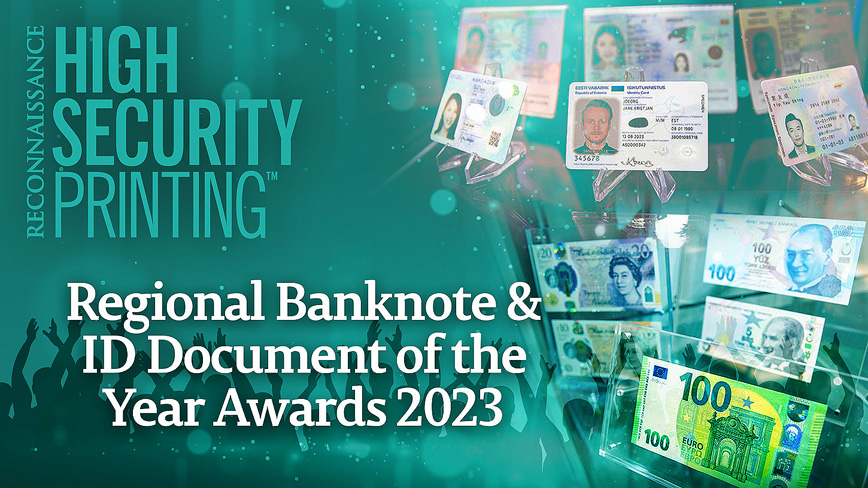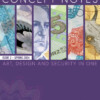The prestigious Regional Banknote and ID Document of the Year Awards form part of the industry’s High Security Printing (HSP) Asia Conference. This year’s event was held in Colombo, Sri Lanka, with the awards presented at a special ceremony during the conference dinner on 5 December.
The regional Banknote of the Year Award recognises outstanding achievement in the design, technical sophistication and security of a banknote or banknote series, with emphasis placed on reflecting the cultural heritage of the issuing country in the note, and the relevance of the overall design and symbolism.
The regional ID Document of the Year Award – which recognise outstanding achievement and technical sophistication of a personal identification or travel document – are designed to promote the best in system infrastructure and implementation of a government passport, identity or other secure identification scheme.
There are three categories for the Banknote awards – Best New Series, Best New Banknote and Best New Commemorative Banknote – with Kyrgyzstan, the Philippines, China and Samoa all receiving recognition this year.
For the ID awards, there are also three categories – Best New Passport, Best New National ID Card and Best Other Security Document. This year Australia and Philippines received recognition.
Best New Banknote Series
The award for the Best New Banknote Series went to the National Bank of the Kyrgyz Republic, for the three new banknotes in the country’s fifth series – in denominations of 200, 500 and 1,000 soms – honouring the 30th anniversary of the national currency.
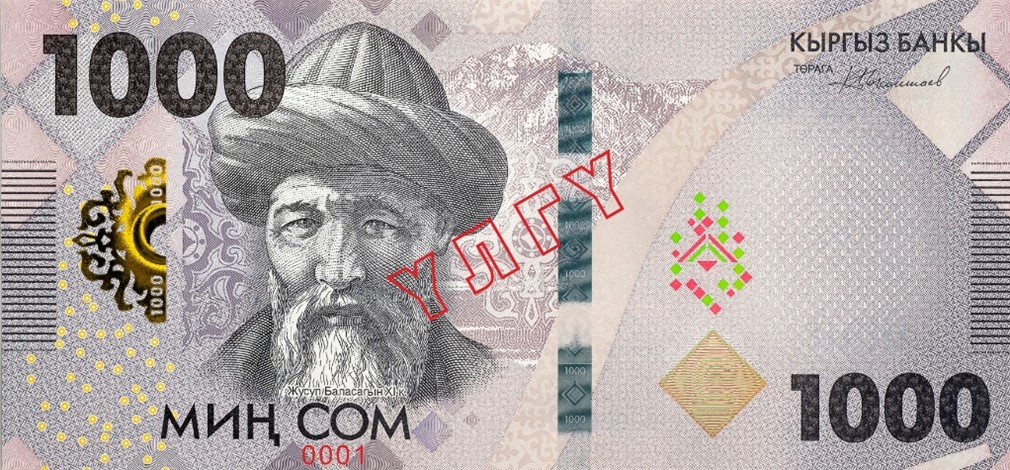
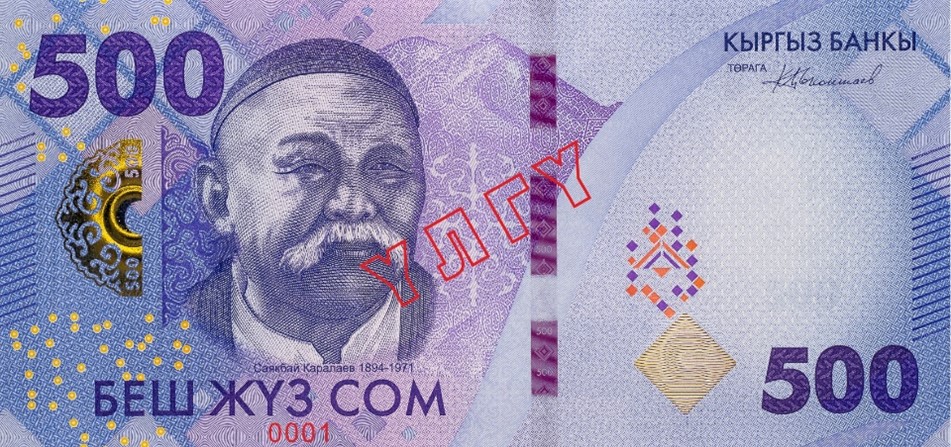
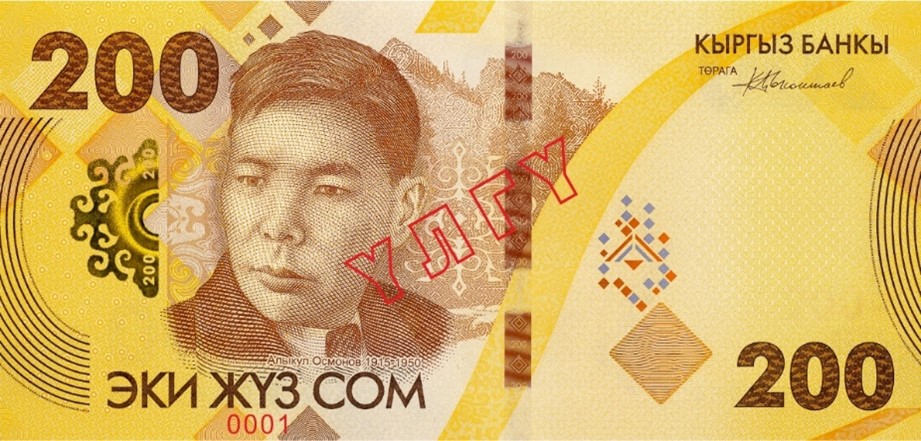
The principal designs remain a reflection of the historical and cultural heritage of Kyrgyzstan and are unchanged, as are the sizes and principal colours, from the previous series, introduced in 2010. But the overall appearance is fresher, more modern and less ‘cluttered’. The portraits, representatives of art and culture, have been preserved on the front of the banknotes and notable sites of the republic on the reverse.
The holographic stripe and narrowed windowed thread on the three previous notes have been replaced with Crane Currency’s RAPID HD Detect security thread, the backgrounds of which move rapidly up and down when the notes are tilted, with the diamond-shaped logo of the National Bank pulsating. The notes also feature sections of traditional Kyrgyz patterns printed with SICPA’s SPARK® Live in gold-to-green with two rings that move when the notes are tilted.
They were designed by the National Bank of Kyrgyzstan and printed by two printers – Oberthur and Crane.
Best New Banknote
Bangko Sentral ng Pilipians won the award for the Best New Banknote for the 1,000 piso, issued in 2022 as a trial of polymer versus its paper counterpart.
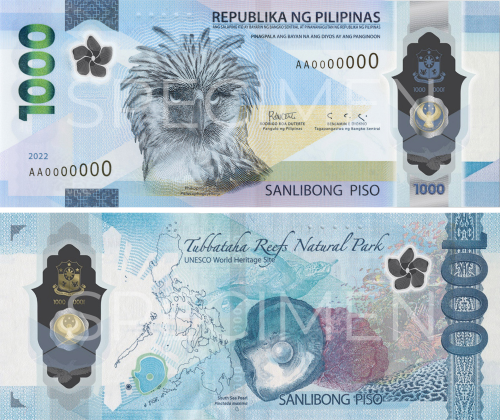
The BSP lifted the core design elements from the Enhanced New Generation series’ paper 1,000 piso, which is the higest denomination in teh series, but replaced the image of the three heroes with that of the Philippine eagle. The choice of the iconic bird, whcih soars above storms, was intended to Filipino spirit in the country in difficult times.
Other design elements include the native flower Sampaguita on one side, and the Tubbataha Reefs Natural Park, South Sea Pearl and T’nalak weave design on the other.
Security features include multiple transparent windows, luminescent imagery, tactile dots a large window incorporating a foil stripe. Several of these are integrated into the GUARDIAN™ substrate itself.
The notes were printed by Note Printing Australia.
Best New Commemorative Banknote
The award for the best new commemorative was a tie this year between the Central Bank of Samoa and China Banknote Printing and Minting Corporation (CBPM).
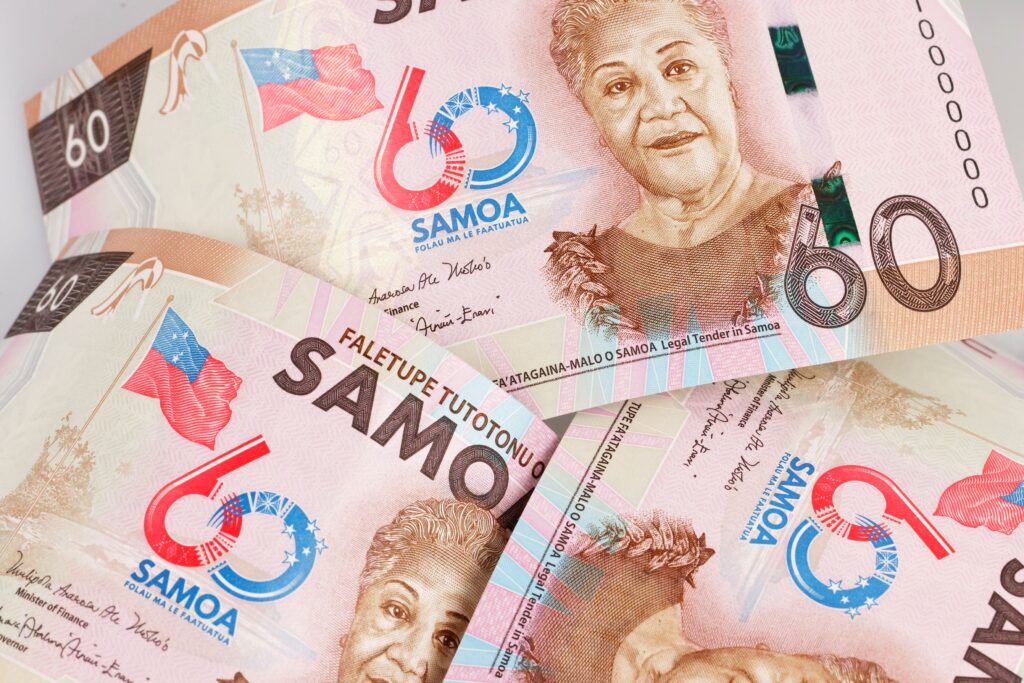
The Central Bank of Samoa’s 60 tala commemorative banknote, issued this year to mark the 60th anniversary of the Pacific Island nation’s independence.
The note was designed and printed by De La Rue on paper and features a blue/green 4.5mm IGNITE® security thread which depicts a Samoan Fue (a fly whisk) that pulses when tilted. Under UV light GEMINI™ can be seen on the front of the note. It also includes a watermark of the teuila, Samoa’s national flower, with the letters CBS.
The banknote features a father and daughter who were both appointed to the office of Prime Minister. On the front is a portrait of the current, and first female, Prime Minister of Samoa, the Hon Fiame Naomi Mataafa. The back vignette depicts the first Prime Minister of Samoa, the Hon Fiame Mataaga Faumuina Mulinuu II during Samoa’s independence back in 1962, depicted lowering the New Zealand flag and raising that of Samoa.
China Banknote Printing and Minting Corporation’s award was for a series of commemorative banknotes issued to celebrate the 24th Winter Olympic Games of 2022, hosted by China.
The Peoples Bank of China issued two 20 yuan commemorative banknotes – one on paper and one on polymer.

The polymer note features figure skaters on the front, beneath whom are images taken frm the famous ancient Chinese painting ‘A Panorama of Rivers and Mountains’, demonstrating the integration of traditional Chinese culture and the Olympic spirit. The building depicted on the reverse is the ‘Ice Cube’ – the Olympics’competition venue – against a night sky of snow and shooting stars The note also includes a dynamic holographic stripe in a window incorporating advanced advanced nano/micro optical security features, and a SPARK Live feature.
The paper banknote features a freestyle skiing athlete on the front, along with the images from the painting as per the polymer note, and the National Ski Jumping Center in Zhangjiakou City, locally known as the Snow Ruyi, on the back against a background of the sunrise. It also features a dynamic holographic stripe and SPARK Live.
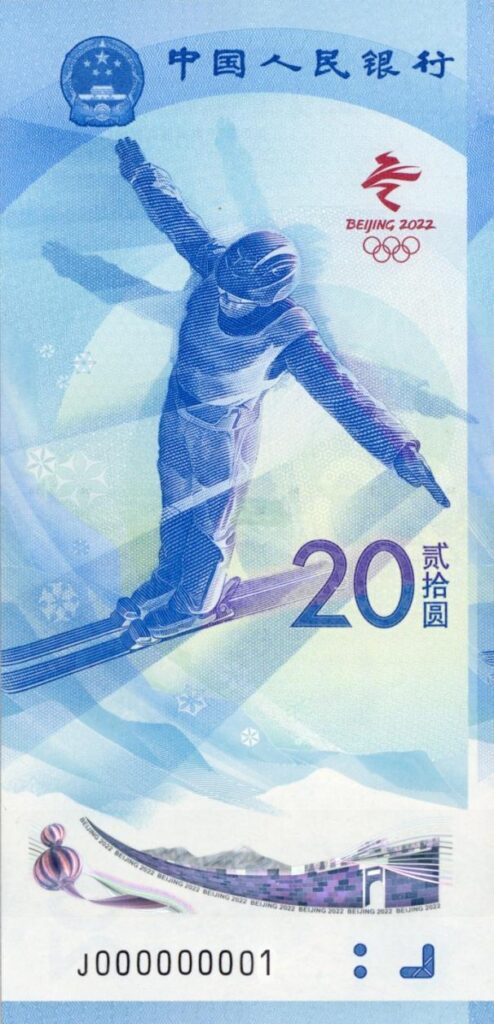
Both notes feature the official emblem of the 24th Winter Olympics Games, and a total of 200 million sets were issued.
Commemorative HK$20 and 20 patacas notes were also issued to mark the Olympics by the Bank of China branches on behalf of the Hong Kong Monetary Authority and the Macao Monetary Authority respectively, again produced by China Banknote Printing and Minting Corporation.
The Bank of China in Hong Kong issued 2 million HK$20 paper notes. The front features the Olympics emblem and the national flower, the Bauhinia, along with the headquarters of the Hong branch and snow, ice and tracks The reverse depicts a silhouette of the iconic Hong Kong harbour under moonlight, the Great Wall of China and a speed skater.
The Bank of China’s 20 pataca note features the emblem of the Games and the head offices of the Bank’s branch in Macao. The reverse depicts track speed skaters and the National Speed Skating Oval built for the Winter Olympics. A
Both the Hong Kong and Macao notes include a magnetic MoveColor windowed security thread, watermark and SPARK Live., among other security features.
Celebrating Innovation in Identity and Travel Documents
In addition to the awards for banknotes, the regional ID Document of the Year Awards were presented at the ceremony, giving the industry an opportunity to celebrate this year’s Best New Passport and Best New National ID Card.
Best New Passport
The winner of the Best New Passport was Australia’s new R series Passport, one of Note Printing Australia’s most ambitious and transformational projects in its 110-year history.
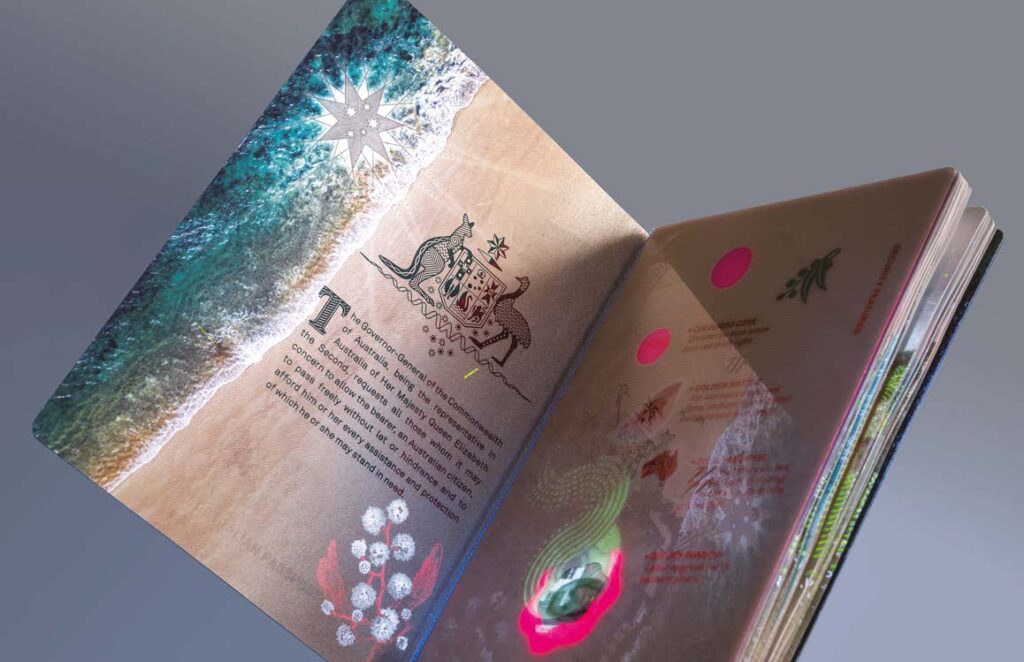
Released in September 2022, the R series is the fifth passport series that Note Printing Australia (NPA) has developed for the Australian Passports Office (APO), and by some margin the most ambitious book NPA has ever manufactured. Thanks to the addition of a new set of technologies built from the ground up, the R series continues the tradition of Australian citizens benefiting from having one of the most advanced, secure travel documents.
The major security driver of the project is the addition of a technically advanced, highly secure polycarbonate data page complimented by vivid, bold double page imagery throughout the visa pages utilising enhanced design that leverages new printing techniques.
Inn 2015, the APO approached NPA with a request to start working on a new series of Australian travel documents. The APO provided a series of criteria that included descriptions such as a ‘wow’ factor. While the criteria was broad, the intent was that it needed to be at least as secure as the existing P series book. Interpreting a brief is always challenging, and in responding NPA initiated the process by investigating a new approach to the R series travel document.
NPA collaborated with the APO on the idea of celebrating the Australian landscape and created the concept of a Northabout journey that started in Canberra and travelled north and anti-clockwise around the country. The landscape imagery needed to capture Australia’s unique light – harsh, bright, big – that highlights Australia’s amazing natural environment and colour palette.
The representation of First Nation Peoples has always been an important inclusion in previous Australian Passport series. This time was no different. The NPA Design team borrowed the ‘Yumari’ painting from previous series and represented it via a watermark feature in the visa page paper – metaphorically representing the fabric of Country, whilst physically serving as the backdrop for each of the 17 locations. In addition, every second double-page spread has a detailed, high contrast electrotype watermark in the form of a kangaroo. The kangaroo borrowed from the Australian Coat of Arms on the cover, follows the R series journey throughout the different locations being positioned on the horizon of each image. This theme extends out as a blind deboss on the back cover.
This remarkable passport exposes the observer to a rich ensemble of Australia’s topographical beauty and when all lights are off, the dreamlike ultraviolet nightscapes become familiar and connects with all Australians.
Best New National ID Card
This year the Best New National ID Card award went to the Philippines for the Philippines national ID card PhilID and the underlying national ID system PhilSys.
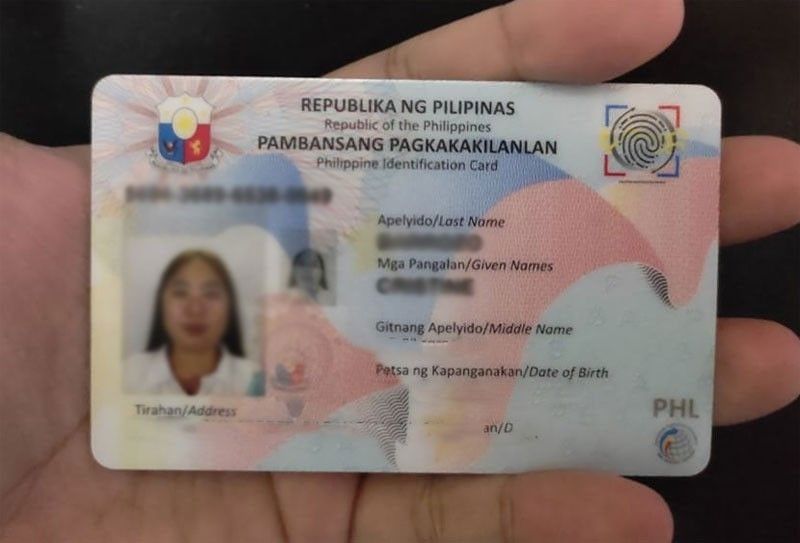
The scheme, signed into law in 2018 and rolled out in 2020, creates a central identification platform for all citizens and resident foreigners in the Philippines and does away with the need to claim and present various government-issued IDs for personal and financial transactions. It has been particularly designed to enhance the delivery of basic services to the public as well as prevent crimes and expedite transactions in the private sector.
The PhilSys collects the full name, sex, date and place of birth, blood type, address, and whether or not the person is a Filipino or resident alien capturing one’s photo, full set of fingerprints, and an iris scan. Once registered, residents get a 12-digit PhilSys number which serves as their digital identity across multiple applications, and their PhilID card.
The PhilID will eventually replace all other government-issued identification except the passport, driver’s licence and Profession Regulation Commission ID. The card shall be honoured and accepted as the official government-issued identification document of a person for his or her transactions in all national government agencies, local government units (LGUs), government-owned and controlled corporations (GOCCs), government financial institutions (GFIs), financial institutions, and private sector.
According to the Philippine Statistics Authority (PSA), the government body responsible for card issuance and system implementation, its objective to speed up the issuance of ID cards to enable citizens enjoy the benefits of the Philippine Identification System. Over 50 million physical and national digital ID cards have been produced and issued so far.
